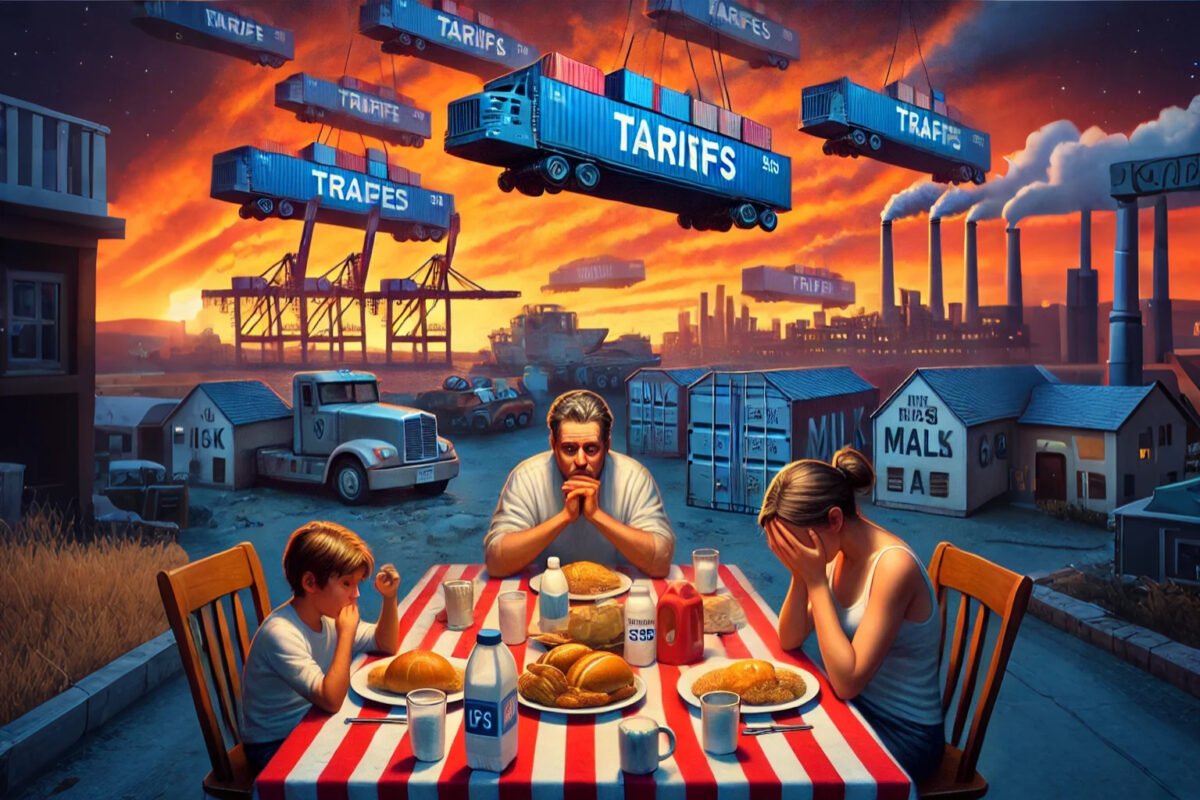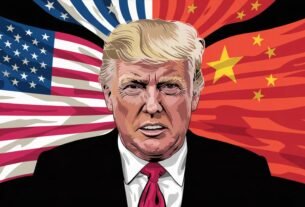Trump-era tariffs hit American budgets hard. Discover the trade tariffs impact on household economy, how tariffs affect consumers, and what steps you can take to protect your wallet.
Introduction: Why Are Prices Rising—and What Can You Do?
Feeling like your money doesn’t go as far as it used to? You’re not alone. From groceries to gadgets, prices seem to keep climbing—and a big part of that is due to the trade tariffs impact on household economy. Especially the ones introduced during the Trump administration.
These tariffs might sound like just another government policy, but for regular Americans—especially those living paycheck to paycheck—they’re hitting hard. Think higher prices on everyday items, squeezed household budgets, and tough financial decisions. But here’s the good news: understanding how tariffs work and how tariffs affect consumers is the first step to fighting back.
This guide breaks it all down in plain English—no financial jargon, just real talk and practical tips you can use to stay ahead.
What Are Trade Tariffs and Why Should You Care?
A Quick Explainer (Without the Econ Lecture) 📘
A trade tariff is a tax that the government puts on goods coming into the country. When the U.S. adds a tariff on Chinese-made electronics, for example, it becomes more expensive for American companies to import those items. Guess what happens next? Companies raise their prices to make up the difference—and you, the consumer, foot the bill.
Why Were the Tariffs Introduced? 🏛️
During the Trump presidency, a wave of tariffs targeted countries like China, aiming to protect American jobs and industries. While that might sound good on paper, in practice it meant that imported goods got pricier—without a quick alternative for cheaper local options.
According to a 2024 update from The Guardian, the average American household has spent hundreds of dollars more per year because of these tariffs. And many of those tariffs are still in place today, continuing the trade tariffs impact on household economy.
Where Are You Feeling the Pain?
Everyday Products That Got More Expensive 💸
You might not see a price tag labeled “tariff charge,” but they’re hiding in plain sight in your daily spending. Here are some of the most common products affected:

Tech and Electronics 💻, m
- Smartphones
- Laptops
- Televisions
- Game consoles
Groceries and Food Products 🥫
- Packaged snacks
- Canned goods
- Frozen vegetables
- Cooking oils
Household Items 🧼
- Furniture
- Appliances
- Cleaning supplies
Transportation 🚗
- Car parts
- Tires
- Used vehicles
That $50 difference on a tablet or the $2 increase on a bag of rice? Multiply that across dozens of purchases a year, and suddenly your budget feels tight. It’s a real example of how tariffs affect consumers and fuel the rising cost of living USA.
Real Numbers: How Much More Are You Paying?
The $831 Question 💵
The Peterson Institute for International Economics found that the average U.S. household paid an extra $831 annually because of the tariffs. That’s not small change.
Imagine What You Could Do With That $831:
- Pay off a credit card balance
- Cover car insurance for a few months
- Start an emergency fund
- Invest it in a Roth IRA or a micro-investing app
If you’re living paycheck to paycheck, that extra cost doesn’t just sting—it can be the difference between keeping the lights on or falling behind.
How Tariffs Hit Low-to-Mid Income Families Harder
The Uneven Impact ⚖️
Wealthier households may barely notice the increase, but for working families, these added costs mean tough choices:
- Buy cheaper but lower-quality items
- Delay important purchases
- Cut back on essentials like healthcare or savings
Example: Sarah from Ohio 👩👧
Sarah is a single mom earning $42,000 a year. With two kids and rising expenses, every dollar matters. When the price of school supplies, groceries, and her car maintenance creeps up, her margin for saving or investing disappears. She’s now spending more but getting less—through no fault of her own.
This scenario plays out across the country, particularly in Black, Latino, and working-class communities that are already under economic pressure. The trade tariffs impact on household economy is especially tough in these groups.
How Can You Fight Back?
Smart Strategies to Beat the Budget Squeeze 🛡️
Let’s be real—you can’t control tariffs, but you can control how you spend. Here’s how to stay one step ahead with these household budgeting tips:
1. Budget Like a Boss 📊
Use tools like:
- Mint: Great for beginners
- You Need A Budget (YNAB): Helps you plan every dollar
- Goodbudget: Based on the envelope system
2. Buy Used or Refurbished ♻️
Save up to 60% by choosing refurbished:
- Electronics from Amazon Renewed or Best Buy’s Outlet
- Furniture from Facebook Marketplace or local thrift stores
3. Meal Plan and Buy in Bulk 🛒
Avoid price markups by:
- Planning meals around weekly sales
- Using bulk stores like Costco or Sam’s Club
- Cooking large portions and freezing leftovers
4. Use Cashback and Deal Apps 💰
Make your spending work for you:
- Rakuten: Get cashback on hundreds of online stores
- Ibotta: Cashback for grocery shopping
- Honey: Finds discount codes automatically at checkout
5. Delay Big Purchases if Possible ⏳
If you can wait, you might save:
- New tariffs may shift or expire
- Sales may bring prices down
- You’ll have time to budget better
What’s Next for Trade Tariffs?
Will Tariffs Go Away or Get Worse? 🔍
A big question on everyone’s mind: Are tariffs here to stay?
Even though many Trump-era tariffs were meant to be temporary, several of them remain in place under the Biden administration. That’s because removing tariffs is politically tricky—it can seem like being soft on foreign competition. Plus, some U.S. industries have grown used to the protection tariffs provide.
Trade Tensions Aren’t Going Anywhere 🌐
With rising global competition and national security concerns, tariffs are being used more and more as leverage in international negotiations. Just look at the ongoing friction with China. As the U.S. continues to prioritize domestic manufacturing, tariffs may even expand to cover more sectors.
So, in short? Tariffs likely won’t disappear anytime soon—and new ones might even pop up.
Planning Ahead: What You Can Do Now
Think Long-Term With Your Finances 🧠
If prices will keep rising in some areas, it’s time to build a game plan. Here are some smart, low-barrier strategies to future-proof your wallet with actionable household budgeting tips.
Build an Emergency Fund 🆘
Tariffs raise prices without warning, so a financial cushion helps you stay prepared. Start with $500, then grow it to 3–6 months of expenses.
Quick win: Open a high-yield savings account (like with Ally or Capital One) and automate $10–$25 transfers every week.
Get Into Micro-Investing 📈
Even if prices are rising, it’s still possible to grow your money. Platforms like Acorns, Fidelity Spire, or Robinhood let you start investing with just a few dollars.
Tip: Focus on ETFs (exchange-traded funds) that spread your risk and grow gradually.
Shop Local and Support U.S.-Made Goods 🇺🇸
Imported goods are often hit hardest by tariffs. Supporting domestic products can reduce your exposure to those price hikes—and help keep dollars circulating in your community.
Check labels, shop at local markets, and use platforms like Etsy for home goods or gifts.
Budgeting Tools to Stay Ahead
The Right App Can Save You Real Money 📱
We covered a few tools in Part 1, but let’s dig deeper into budget helpers that go beyond tracking.
Empower Personal Dashboard 📊
A newer player with detailed net worth tracking, spending breakdowns, and savings goals. Ideal for visual learners.
PocketGuard 💡
Connects your bank accounts and tells you exactly how much you have available to spend today—great for avoiding overdrafts.
Zeta (for Couples) 💑
If you’re sharing finances with a partner, Zeta helps track joint and individual goals.
Want to dive deeper into budgeting? Read our complete guide to the best budgeting apps for 2025.
Real Talk: Managing Debt in a Tariff-Driven Economy
How to Get Out of Debt Faster 💳
Tariffs make everything more expensive—including debt payments, if you’re juggling credit card interest on top of the rising cost of living USA. That’s why tackling debt should be a priority.
Try the Snowball Method ❄️
Pay off your smallest debt first, then roll that payment into the next. It builds momentum and motivation.
Consider a Balance Transfer Card 🔄
Find a 0% APR card (check out offers from Chase or Citi), transfer your balance, and pay it down aggressively during the no-interest window.
Call Your Lenders ☎️
Seriously—many will reduce your interest rate or offer hardship plans if you simply ask.
Staying Informed Without Getting Overwhelmed
Understand What’s Happening—Without the Headache 🧩
Financial news doesn’t have to be boring or hard to follow. Here are reliable sources that break down complex issues (like the trade tariffs impact on household economy) in easy-to-understand language:
Even just 10 minutes a week catching up can make you more confident in your financial decisions.
Conclusion: You Have More Control Than You Think 💪
Tariffs might not be something you voted for—but you can absolutely respond in ways that protect and grow your money.
From smarter shopping and budgeting to building savings and investing with purpose, you’re not powerless. In fact, you’re in the driver’s seat now that you understand the trade tariffs impact on household economy.
So keep learning. Keep adapting. And most importantly, take action. Because even in a world of rising costs, your financial freedom is still within reach.
👉 Next step? Read this guide on “How to Invest in 2025 with Just $100”
FAQs
1. Will tariffs affect my taxes?
Not directly. Tariffs are import taxes paid by companies, but they raise product prices, which impacts consumers.
2. Should I stop buying imported goods?
Not necessarily, but being mindful and comparing domestic options can help reduce your exposure to tariff-driven costs.
3. Can I negotiate prices because of tariffs?
In some cases—especially local businesses or marketplaces—you may be able to score better deals or discounts.
4. Is now a bad time to invest?
Not at all. Rising costs make it more important to grow your money over time. Start small, stay consistent.
5. Where can I find made-in-USA alternatives?
Try websites like MadeinUSAForever.com, Etsy, and even filter options on Amazon for “Made in USA.”
Stay sharp, stay informed, and keep moving forward. 💪 Your money’s got places to go.

Author: Michael holds an MBA in business management. He worked for 5 years as an investment consultant. He also works as a freelancer for a security company. He is the creator and writer of the finance article WalletWise.blog — where he shares practical tips and his experiences. His mission is to make the financial world simpler, more accessible and free of hidden fees.
Simple strategies, great results. Make your money count!




